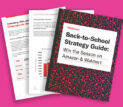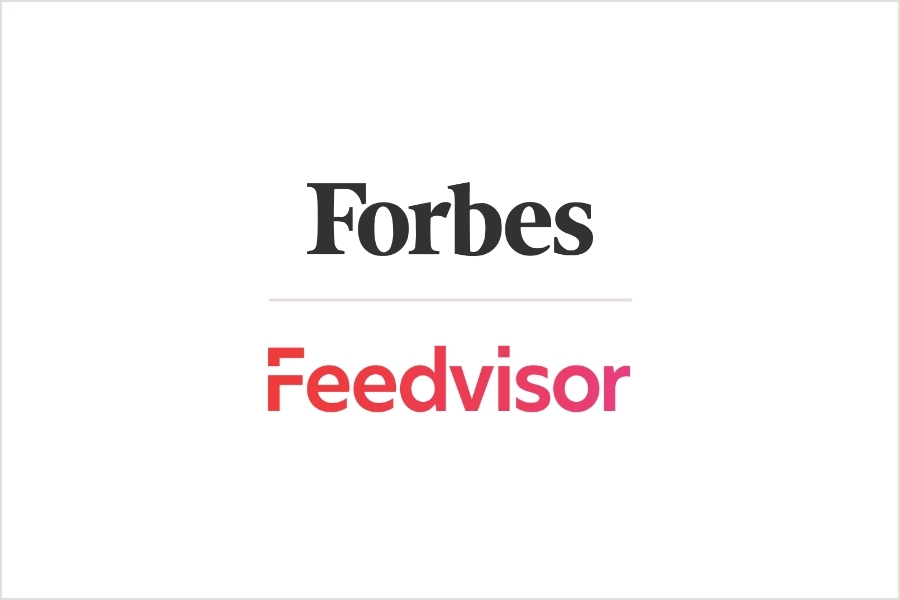
Categories
Latest Posts
Tags
Advertising Amazon Amazon Advertising Amazon Experts Amazon Listing Optimization Amazon Marketplace Amazon News Amazon Prime Amazon Professional Sellers Summit Amazon Seller amazon sellers Amazon Seller Tips Amazon Seller Tools ASIN Brand Management Brands Buy Box Campaign Manager Conference COVID-19 downloadable Dynamic Pricing Ecommerce FBA FBM Holiday Season industry news Multi-Channel Fulfillment Optimize pay-per-click Pricing Algorithm Pricing Software Private Label Profits Repricing Repricing Software Revenue Sales Seller Seller-Fulfilled Prime Seller Performance Metrics SEO SKU Sponsored Products Ads Strategy
Get the latest insights right in your inbox
Resource | Blog

Cyber 5 Analysis: 2024’s Results
SUMMARY
Check out sales totals, category winners, ad metrics and more from the biggest shopping event of the season.

Marissa Incitti
Associate Director of Content for Feedvisor
With just 27 days between Thanksgiving and Christmas, this year’s compressed holiday shopping season ignited a surge in consumer spending as retailers and shoppers alike raced to make the most of the limited timeframe. Moving away from Cyber 5, we are now in the Cyber 12-era, where deals and promotions are expected to begin early, and sales pick up sooner. This year did not disappoint as shopping (and spending) hit record numbers with total spending hitting $41.1 billion.
In the analysis below, we break down the five-day shopping period, providing our insights using aggregated data across Feedvisor’s clients as well as industry stats.
Building Momentum: Strong Sales Lead Into Cyber 5
Feedvisor clients saw impressive sales growth in the lead-up to the Cyber Five, averaging a 10% increase year-over-year during the first six days of Cyber 12, beginning November 21st—the day Amazon launched its Black Friday deals. This early surge illustrates how well-timed deal announcements can drive early shopper engagement and pull demand forward, especially in an uncertain climate.
As the week progressed, consumer behavior shifted, with many holding out for deeper discounts on big-ticket items during the actual Cyber Five. Feedvisor clients achieved a 5% sales increase year-over-year during this pivotal shopping period, driven in particular by standout performance in key categories: Clothing (22%), Beauty (14%), and Electronics (10%).
This growth, fueled by strong consumer sentiment, reflects broader market trends, including an 8.2% year-over-year increase for Cyber 5 in the U.S. online sales.
Cyber Monday and Black Friday Dominate
Cyber Monday emerged as the star of the season, driving $13.3 billion in sales, a 7.3% increase year-over-year and the largest single online shopping day in history. Black Friday also delivered strong results with $10.5 billion in sales, reflecting consumers’ preference for waiting until key promotional days to complete their purchases.
Feedvisor clients followed the trend, with Cyber Monday outperforming other days. This reinforces the importance of leveraging strategic pricing and promotional tactics early in the lead-up and during Cyber Five to capture both deal-seeking early birds and last-minute shoppers.

Mobile Takes Center Stage
As inflation and interest rates ease, and despite the looming threat of tariffs, the festive holiday spirit brought shoppers out in droves—or more accurately, had them reaching for their devices.
This year, mobile devices accounted for more than half (51.8%) of online sales, totaling $7.6 billion. On Black Friday, traditionally a high in-store traffic day, mobile devices drove 80% of U.S. traffic to retailers’ sites and apps and 55% of online sales. While desktop shopping still holds an edge, the steady rise of mobile commerce highlights the growing importance of mobile-friendly websites.
Top 5 Categories for 2024
The top five sales categories during Cyber 5 showcased a compelling blend of timeless gift-giving favorites and essential everyday purchases, highlighting the breadth of consumer priorities. Apparel dominated as the top category, underscoring its perennial popularity for holiday gifting. Meanwhile, Personal Care Products and Groceries signaled a growing focus on necessities, with groceries standing out as a rising star—purchased by over a third of shoppers, marking a significant increase from last year. This evolution reflects broader trends identified by Feedvisor, where categories such as Apparel, Home Goods, and Toys reliably anchor seasonal sales, while staples like Groceries and Personal Care sustain steady, year-round demand.
Carts Get Bigger
The average purchase size reached $340.93, up from $321.41 in 2023, with Millennials driving much of the holiday spending:

Generational Spending Patterns: Shifting Dynamics
These changes reflect a shift in purchase power, as Millennials, with their established earning power and comfort with online shopping, lead in average spending. Driven by their increasing financial independence and familiarity with emerging e-commerce platforms like TikTok Shop, Gen Z is catching up. While Baby Boomers, still active participants, showed a more conservative approach, possibly due to fixed incomes.
Deals & Discounts
The average discount rate across industries overall was 28%, with big-ticket items like toys (27% off), electronics (27% off), and TVs (24% off) taking center stage. Consumers showed a preference for securing major purchases rather than trading down, potentially influenced by concerns over future tariff increases.
Retailers launched deals earlier this year with Walmart promoting Black Friday deals as early as November 11th and Amazon and Target starting their sales November 21st.
Notably, 39% of Black Friday spending occurred before the day itself, starting in October with Amazon’s Prime Big Deal Days and Walmart’s Holiday Deals Kickoff events, underscoring the season’s shift toward early promotions.
Amazon Continues to Dominate Cyber 5 Week, But Traffic is Stagnant
During Cyber 5 week, Amazon continued its dominance in online retail, capturing 86% of traffic share, far outpacing competitors like Walmart (64%) and Target (47%), according to SimilarWeb data. Despite early promotions and heavy discounts, other retailers saw a dip in traffic during this key shopping period, suggesting that early deal releases may have diluted their peak performance. Emerging channels like TikTok Shop are also reshaping the landscape, with TikTok driving over $100 million in U.S. sales on Black Friday alone, signaling growing competition and shifts in consumer buying behavior toward social-driven commerce.
Ad Sales and Spend: Evolving Strategies
Among Feedvisor’s clients, ad spend decreased by 14% compared to last year, as more brands and sellers opted for longer-term strategies, including early holiday promotions and leveraging Amazon’s halo effect. These strategies paid off for specific categories:
- Toys: +17% ad sales
- Apparel: +5% ad sales
- Electronics: +3% ad sales
While overall impressions declined by 11%, certain categories like electronics experienced a 107% surge, signaling more focused and intentional searches within specific segments. The decline in impressions also reflects declining budgets year-over-year, with an average decline of 25%. Ad clicks mirrored this trend—down 20% overall but showing a 25% increase in electronics and 7% uptick in apparel, highlighting a shift toward deliberate, category-driven engagement.
AI and Technology Shape Shopping Trends
Generative AI and AI-powered agents played a pivotal role in this year’s shopping surge, driving over $14 billion in global online sales on Black Friday. Automation is starting to gain momentum, as retailers leveraging generative AI experienced a 9% higher conversion rate than those that did not during the five day shopping spree. In fact, bot-driven clicks to retail sites surged by an astounding 1,800% year-over-year, underscoring the growing influence of automation in e-commerce.
Looking ahead, AI is poised to become an even more integral part of retail strategies, particularly as advertising space opens up within chatbots. This is an untapped space that Amazon is hoping to lead the way in, as they recently announced ad capabilities coming soon within its chatbot, Rufus. The ability to personalize experiences and optimize conversions will define competitive advantages in the years to come.

Outsmart the Competition With the Leading AI-Powered E-Marketplace Optimization Technology
Maximize Profits By Harnessing Feedvisor’s AI to Optimize Pricing and Advertising Strategies.
Looking Ahead: What’s Next?
As the Cyber Five fades into memory, the spotlight shifts to 2025. To thrive in the increasingly competitive landscape of 2025, retailers must navigate several key areas: refining discount strategies to remain appealing without eroding margins, crafting media plans with optimal budgets to tackle rising costs, and identifying the most effective ad combinations to maximize ROI. The role of AI-driven agents, which garnered mixed reviews this season, will also be critical as brands seek innovative ways to engage shoppers.
Retailers that adapt to shifting behaviors, optimize their strategies, and embrace innovation will be well-positioned to succeed in the competitive landscape of 2025.
This season’s record-breaking performance underscores the enduring strength of the American consumer, who continues to blend tradition with modernity in their holiday shopping journeys.




